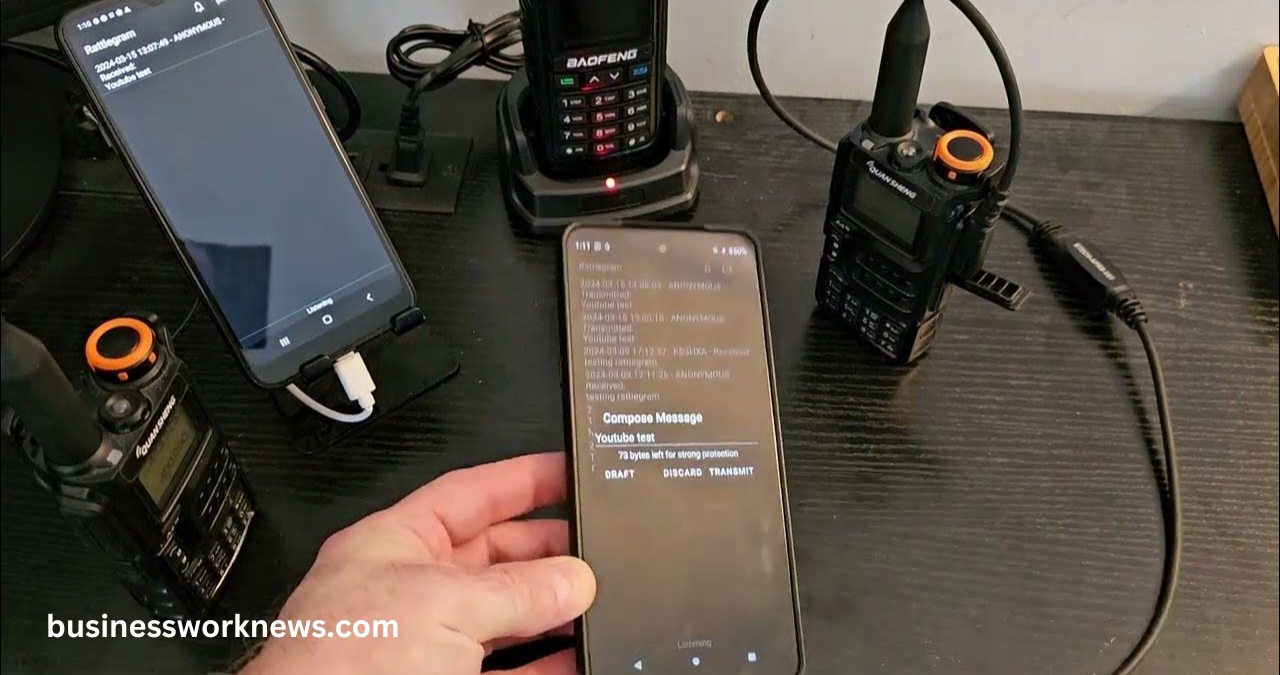Introduction
In the rapidly evolving world of digital communication, Rattlegram Settings HF stands out as a pivotal tool for high-frequency (Rattlegram Settings HF) applications. The key to harnessing Rattlegram’s full potential is carefully optimizing its settings, which can significantly enhance performance and efficiency. This article explores the various settings and configurations that users can adjust to maximize their HF communication capabilities using Rattlegram Settings HF. From audio adjustments to frequency management and security enhancements, we will cover all you need to know to make the most of this powerful platform, focusing on the essential “Rattlegram settings HF.”
Understanding Rattlegram and Its Role in HF Communication
Rattlegram Settings HF is a sophisticated high-frequency (HF) communication software widely used in the aviation, maritime, time, and emergency services industries. HF communication is crucial in scenarios where long-distance transmission without reliance on satellite technology is necessary. Rattlegram helps bridge the gap by providing robust tools that ensure precise and reliable communication over vast distances.
The platform addresses several common challenges in HF communication, such as signal interference, security risks, and complex user interface issues. By optimizing “Rattlegram settings HF,” users can overcome these hurdles, resulting in smoother and more efficient communication channels. Understanding how to adjust these settings according to specific needs and environments is paramount for professionals relying on HF communication.
Essential Rattlegram Settings for HF Optimization
Audio Quality Settings
Clear audio is fundamental in HF communication, and Rattlegram provides several tools to enhance this aspect. Users should focus on adjusting audio filters to minimize noise and enhance clarity. This involves setting the correct thresholds for noise gates and fine-tuning equalizers to boost speech frequencies while dampening irrelevant noise. Additionally, managing audio gain is crucial; too high a gain might introduce distortion, whereas too low a gain can render the communication inaudible.
Frequency Tuning and Management
Effective frequency management is another critical aspect of optimizing “Rattlegram settings HF.” Users must select frequencies that minimize the risk of interference and provide the best transmission quality. This involves understanding the radio spectrum and its congestion in different areas. Rattlegram allows users to scan frequencies to identify the most apparent channels and save these preferences for consistent performance.
Interface Customization
Customizing the user interface can improve operational efficiency. Rattlegram allows for significant customization, enabling users to tailor the layout and controls to their needs. This could mean configuring the dashboard to prominently display the most used features or setting up quick access to frequently used functions. Personalization enhances user comfort and reduces the time spent navigating menus, leading to faster and more effective communication.
Security Features
Security cannot be overlooked in HF communication. Rattlegram supports various encryption protocols to secure data transmissions against eavesdropping. Users should ensure these settings are enabled and properly configured to protect sensitive information. Regular updates and patches provided by Rattlegram also help safeguard against new vulnerabilities, making it imperative for users to keep their systems up to date.
Advanced Configuration and Troubleshooting

Users can explore Rattlegram’s advanced settings and troubleshooting options to enhance HF communication. Automating routine tasks through macros can save time and reduce human error, making operations more consistent. Additionally, Rattlegram’s diagnostic tools provide valuable insights into system performance and help identify areas for improvement.
When issues arise, understanding how to troubleshoot them effectively is essential. Rattlegram offers comprehensive logs and diagnostic tools that users can analyze to pinpoint problems. Whether it’s a configuration error or hardware malfunction, a systematic approach to troubleshooting can quickly restore system functionality.
Integrating Rattlegram with Other Systems
Integrating Rattlegram with existing communication infrastructures can further enhance operational capabilities for many organizations. This process involves understanding the compatibility between systems and implementing protocols that enable seamless communication between Rattlegram and other software or hardware. The benefits of this integration include streamlined operations and the ability to leverage more comprehensive data insights for decision-making.
Best Practices for Maintaining Optimal HF Performance
“Rattlegram settings HF” should be monitored and maintained regularly to maintain optimal performance. This includes routinely checking system logs for errors, updating the software to the latest version, and revisiting settings to ensure they remain optimized for current operating conditions. Continuous learning about new features and best practices can also significantly benefit users by enabling them to utilize Rattlegram to its full potential.
Conclusion
Optimizing Rattlegram for HF communication is not just about tweaking settings but understanding the platform’s comprehensive capabilities. By following this article’s guidelines and best practices, users can significantly enhance their communication efficiency and security. As digital communication technologies evolve, staying informed and adaptable is the key to success.
FAQS
Q: What are the essential Rattlegram settings HF for optimal audio quality in high-frequency communication?
A: This FAQ can address specific settings within Rattlegram that are crucial for maintaining clear audio quality, such as noise filters, gain adjustments, and equalizer settings tailored for HF environments.
Q: How can I secure my HF transmissions using Rattlegram settings HF?
A: This FAQ would detail the security features available in Rattlegram and explain how to configure encryption settings and secure communication protocols to protect data transmitted over high-frequency signals.
Q: What troubleshooting steps should I follow if encountering issues with Rattlegram settings HF?
A: The FAQ could outline a systematic approach to diagnosing and resolving common problems related to HF settings in Rattlegram, including connectivity issues, audio quality problems, and interface glitches.
Q: Can Rattlegram settings HF be customized for different HF communication environments?
A: This question can discuss the adaptability of Rattlegram settings to various operational scenarios, such as maritime, aviation, or emergency services, highlighting how users can customize frequency management and interface options to suit specific needs.
Q: What are the best practices for updating and maintaining Rattlegram settings HF?
A: This FAQ would recommend how often to check and update Rattlegram settings for HF communication, including tips on staying informed about the latest features and enhancements to ensure reliable and efficient performance.
You May Also Read: https://businessworknews.com/




